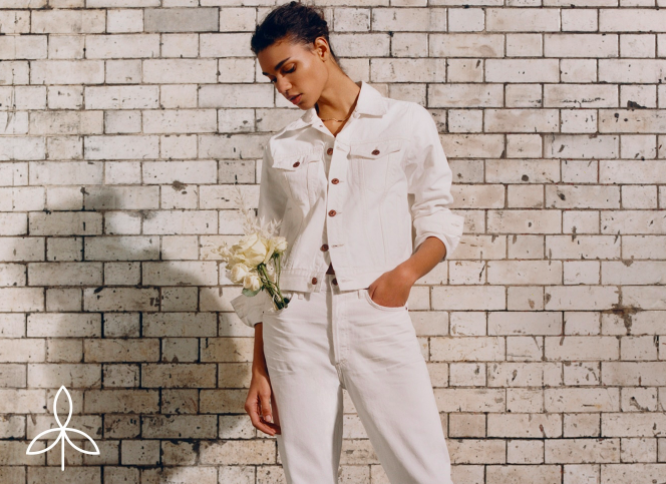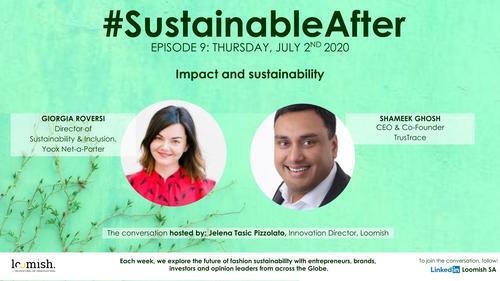#SustainableAfter, Episode 9
‘The customer is always right’. This time round, it’s true!
The conscious customer as the ultimate catalyst for fashion sustainability
Let’s do a quick sustainability A/B test.
This widely-used user experience method is often applied in eCommerce for comparing two versions of a web page to figure out the one that converts better.
So, our Sample A is a product web page presenting a white leather sneaker, with all the standard details you would expect: sizes, product photos, colours, what it is made of, where and… that’s about it.
Now let’s move to the Sample B. The same shoe, same standard details, plus a wealth of detailed information about the origin of each piece of the shoe – the sole, insole, lining, shoe laces, along with a few pictures of people manufacturing it, perhaps even a message that a percentage of sales goes to support independent rubber producers in Brazil.
- Same product. Same price. What do you go for?
- Same product. Different price: +10% premium for the sustainable version. What do you go for?
- Same product. +20% premium. What do you go for?
Sustainability sells
There appears to be accumulating evidence that consumers are impacted by the perceived sustainability of a brand and are willing to pay a premium for it.
A big eCommerce retailer reported that “during Covid, rich product information on sustainability has driven 20-30% of higher sales velocity for those products”, says Shameek Ghosh, CEO & Co-Founder TrusTrace, a tracing and transparency solution for fashion.
Confirming the solidification of the sustainability trend with the fashion consumer, Giorgia Roversi, Yoox Net-a-Porter’s (YNAP) Sustainability and Inclusion Director, underlines that their customers have become adamant requiring more sustainability from brands.
YNAP’s recent sustainability surveys of their stakeholders confirm it, as Giorgia explains:
“In our survey last September, we saw a completely different customer. Everything connected to carbon emissions just became a top priority for them.
Further, in the 2020 survey, we again see a slightly new version of the customer: far more conscious and a bit more “activist” in what they are demanding from brands, both in terms of environmental sustainability, but also broader social, diversity and inclusion topics.
This means that brands and retailers will absolutely need to make this change once and for all, which would bring a healthier ecosystem for the fashion industry and beyond.”
 Fashion sustainability – from granola to mainstream in a blink of an eye
Fashion sustainability – from granola to mainstream in a blink of an eye
Although the underlying sustainability trend was already there, the pandemic seems to have accelerated the way the customer uses its voice to demand change from brands. Now brands need to deliver on that expectation. Indeed, while just a few years ago “sustainability” was a niche trend, now it is moving towards becoming a hygiene factor for any brand that needs to survive this big shift.
At YNAP, they have witnessed this change take place in a course of a year, with the launch of NET SUSTAIN, Net-a-Porter’s sustainable edit which offers complete sustainability assessment of each brand and product included in this curated section.
“When we launched NET SUSTAIN in June 2019, there were just a few brands that we were able to involve. Now we have a waiting list of brands who really want to be a part of it”, says Giorgia.
Brands need more relevant data
Communicating sustainability of a fashion product is not a simple feat though. Namely, the amount of expertise, data and variables to cover across the brand’s usually complex supply chain makes it a serious endeavour.
And let’s not omit the workforce needed to cover this additional activity.
But there are smart entrepreneurs that spent time studying the industry dynamics and developed solutions which enable fashion brands to take control of their supply chain sustainability and communicate it accurately.
 TrusTrace, a Swedish-based scale-up, is one of them.
TrusTrace, a Swedish-based scale-up, is one of them.
Their CEO and Founder, Shameek Gosh, explains:
“We take a very data-driven approach to sustainability and production processes. TrusTrace is a product traceability and transparency platform, using technologies such as artificial intelligence, blockchain and IoT.
The platform does two things: ensures material integrity in a product and ensures that the product is manufactured responsibly.”
In layman’s terms, TrusTrace captures this data from the very source: a farm or a factory, following tight guidelines provided by the brand, and traces the process all the way to the final product.
This takes the entire sustainability approach for brands to a whole new level: by plugging into the platform, they are able to drive and control their sustainability agenda with much more confidence and efficiency. On top, this finally enables brands to get precise, detailed information about sustainability to share with the customer.
Brands seem to appreciate the model, which has helped fuel a steady growth and interest in TrusTrace over the last two years:
“Currently we work with 30-odd brands across Europe and we have more than 5,000 suppliers in the platform from all over the world”, explains Shameek.
The strong consumer push towards sustainability is definitely a part of this success. Also, it is a trend that is here to stay.
Listen, Greta happened
“’Greta happened’, that is how I explain our customer survey results that aim strongly at sustainability. It is the customers and especially Gen Z that are driving this change, demanding more from retailers, brands, governments. My hope lies with them”, concludes Giorgia.
…
It was over a century ago that Harry Gordon Selfridge, founder of the luxury store that bears his name, summed up the importance of flawless service when he reportedly coined the phrase “the customer is always right” at the start of the 20th century.
This time around, especially when it comes to fashion sustainability, the customer is really right.
Let’s listen to her.
Listen to the full conversation here>>>>>
